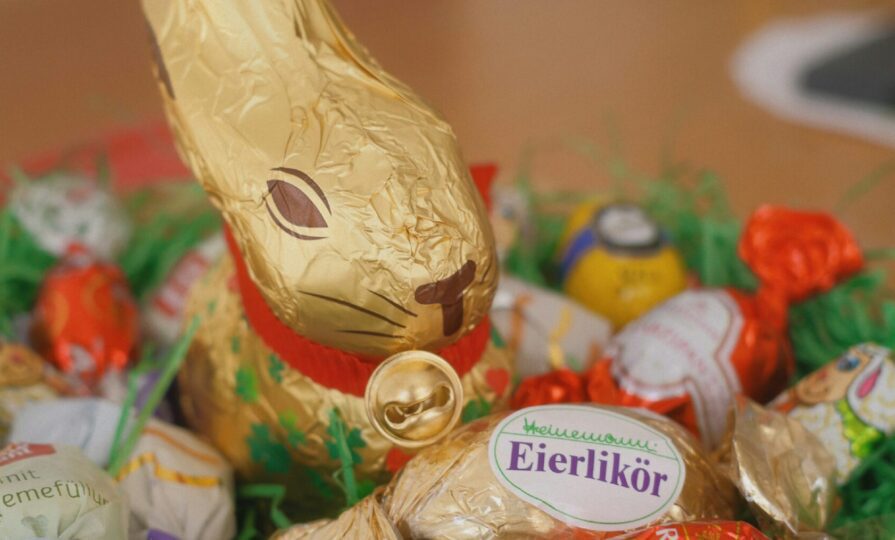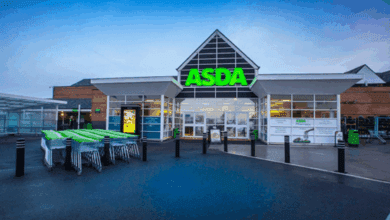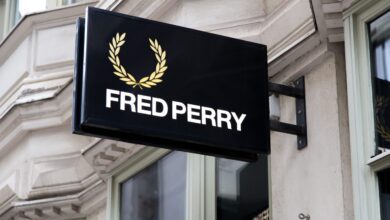How can a late Easter impact retailers?
The BRC-Sensormatic data recently revealed that due the timing of Easter later this April compared with March last year, total year-on-year footfall in the UK fell by 5.4% in March, up from a 0.2% fall in February. This calendar shift has distorted year-on-year comparisons, leading to artificially lower March figures and likely boosting April’s. In light of this, industry experts are weighing in on how Easter timing is influencing consumer behaviour—examining whether shoppers are trading down, delaying purchases, or still prioritising treats around the holiday period

Register to get 1 more free article
Reveal the article below by registering for our email newsletter.
Want unlimited access? View Plans
Already have an account? Sign in
Seasonal calendar moments continue to be crucial drivers for retailers. According to the latest BRC-Sensormatic data, total year-on-year footfall in the UK dropped by 5.4% in March—an increase from the 0.2% decline in February—largely due to Easter falling in April this year, compared with March last year. This calendar shift has distorted year-on-year comparisons, leading to artificially lower March figures and likely boosting April’s.
Rory O’Neill, CMO at global digital payments platform Checkout.com, states that as Easter falls nearly a month later than in 2024, landing on 20 April, it adds another layer of complexity to consumer planning.
However, although a later Easter date reduced footfall in March and skewed year-on-year comparison, according to Daniel Todaro, CEO of marketing consulting firm Gekko Group, it is potentially encouraging more social gatherings and a desire for family-focused activities seem to be driving increased spending.
According to GlobalData’s recent analysis, the UK consumers predicted to shell out £2.3bn across the festive period, driven by food and drink and luxury Easter eggs. “This year, it appears that the cost-of-living crisis is not dampening Easter spending,” says Todaro. “In fact, several reports indicate a potential increase in consumer spending compared with previous years.”
This shift in timing allows for longer days and warmer temperatures, making people more inclined to plan outings and shopping. O’Neill believes the timing of Easter also brings weather into play as a key behavioural driver. He states that warmer forecasts could prompt a surge in seasonal purchases—think BBQs, summer apparel, and family outings.
He points out that the first sunny weekend in March triggered a 137% jump in outdoor-related spending, while a particularly warm Friday saw home and garden sales spike by 165%.
Still, with Britain’s famously unpredictable spring weather, consumers appear ready with backup plans. “If April showers hit, we’ll likely see an uptick in indoor activities—cinemas, museums, and theatre bookings,” he adds.
While 2023 saw a more cautious approach from shoppers, and 2024 marked a modest uplift, forecasts for Easter 2025 point to a more noticeable rebound. Deann Evans, managing director, EMEA, at Shopify also highlights that according to its product data, consumers are preparing for Easter early this year – mainly driven by food sales. Compared with February, sales of Easter Egg decorating kits and lamb increased by more than 100% in March (106% and 111.5%, respectively), with chocolate also rising by more than a third (37.1%) over the same period.
Yet even as shoppers celebrate, they’re treading with caution. Vineta Bajaj, former Ocado executive and current CFO at Rohlik Group, notes that “in recent years, Easter spending has been heavily shaped by economic circumstances,” and this year is no exception.
Amid the ongoing cost-of-living crisis, consumers are leaning towards smaller, more budget-conscious celebrations. “Shoppers are increasingly focusing on essentials and avoiding unnecessary expenditure,” Bajaj explains, adding that overall spend is notably down compared with pre-pandemic years.
Rather than splurging on premium labels or extravagant experiences, many are prioritising value—opting for own-brand supermarket products, planning purchases in advance, and hunting for deals. As Bajaj puts it, “price sensitivity has intensified,” and shoppers are now “demonstrating increasing savvy in stretching their funds.”
Similarly, Todaro notes that economic pressures continue to weigh heavily on consumer behaviour this Easter. The ongoing cost-of-living crisis has “driven up prices for essentials, squeezing household budgets and prompting a more cautious approach to seasonal spending”.
“While there is still a desire to mark events like Easter, many consumers will be prioritising value for money,” Todaro says. He advises retailers to recognise this shift and offer “a range of options that cater to different budgets, while still providing a sense of occasion.”
However, not all consumers are responding in the same way. “Consumer behaviour is not uniform,” he explains. “Some households may continue with their usual spending habits, while others will make significant adjustments to stay within budget.”
Additionally, Jim Rudall, who leads the commercial go-to-market operation for Intuit Mailchimp as regional director across EMEA, explains that in today’s fast-moving, choice-saturated environment, the balance of power has firmly shifted toward the consumer—especially among younger shoppers. This generational shift is reshaping how people engage with brands and make purchasing decisions.
“Young consumers increasingly expect products and services to come to them,” Rudall says, citing recent data showing that 71% of 18–24-year-olds and 73% of 25–34-year-olds believe they won’t need to actively search for what they need in the future. Instead, they anticipate hyper-personalised experiences that intuitively meet their needs.”
For retailers, this means rethinking how they connect with customers. According to Rudall, the challenge now is to “adapt swiftly and deliver the kind of intuitive, tailored interactions today’s consumers demand.”
O’Neill states: “With the new tax year bringing higher household bills from 1 April, we may see more cautious Easter spending,” O’Neill notes. However, early trends point to forward planning, with many families organising activities for the school holidays. “We recorded a 381% spike in experience day bookings during the first weekend of April, compared to average daily volumes.”
Despite the late arrival of Easter, some of the supermarkets were still able to maintain strong sales growth. For instance almost a quarter (24%) of all GB households shopped at M&S in the last four weeks ending 23rd March 2025, seeing the retailer maintain strong sales growth (+12.2%) with market share increasing to 3.9%, up from 3.6% a year ago. Ocado also saw growth (+17.1%) in market share over the last four weeks.
Additionally, Waitrose sales grew +3.4% with a healthy increase in new shoppers over the last 12 weeks.
According to Mike Watkins, head of Retailer and Business Insight at NIQ, shopping habits are shifting as consumers adapt to rising costs, with many actively seeking out better deals to manage their budgets. This trend appears to be boosting the popularity of discounters, which now hold an 18.1% share of all FMCG sales in Q1—their highest in over two years—with an average spend per visit of £24.09.
What else can retailers do to boost sales in the run up to Easter?
To maximise opportunities this season, experts agree that success hinges on pricing strategies, convenience, personalisation, and a responsive digital presence. Evans states that price remains a major driver. According to Shopify data, 83% of UK shoppers actively compare prices to find the best deals, with half citing discounts as a key factor in brand loyalty.
However, convenience also plays a significant role. Shipping fees are among the top deterrents for consumers—more than a third are put off by added delivery costs, and 42% say free shipping and returns significantly influence their loyalty. This suggests that frictionless experiences can be just as motivating as discounts.
Furthermore, loyalty incentives also matter. Nearly one in three shoppers actively seek out loyalty schemes, while others prioritise strong customer service or feel discouraged if their loyalty goes unrewarded. As Evans points out, strategies that combine price, convenience and thoughtful rewards can give retailers an edge during seasonal peaks like Easter.
Rudall also notes that “nearly two-thirds of UK consumers are willing to share their data if it means receiving more relevant, personalised experiences.” Segmentation—like targeting ‘last-minute shoppers’ or ‘holiday gifters’—allows for smarter marketing, while channels like SMS and email can be used to deliver timely, tailored promotions. “The key is to meet consumers where they are, with messaging that feels relevant and responsive,” he adds.
According to Bajaj, retailers should also adapt to current lifestyle trends. She advises bundling products to add value while maintaining margins and focusing marketing on home-centric Easter celebrations. “Promotions that cater to current consumer priorities, like bulk discounts on essentials or family activity bundles, align well with shopper sentiment,” she notes.
Another factor retailers must account for is that environmental and ethical concerns are also shaping purchasing behaviour. Todaro highlights that “sustainability is increasingly influencing choices, particularly in categories like gifting and confectionery.” He adds that while economic pressures persist, “the desire to celebrate Easter and create meaningful moments remains strong,” especially through activities and decorations that bring families together.
Retailers that diversify their offer, providing both budget and premium options, are more likely to thrive, particularly if they tap into the season’s emotional and social value. With warmer weather forecasted, promoting products tied to outdoor experiences, such as garden furniture, barbecues, or family outings, could further drive spend.
O’Neill underscores the importance of timing and context. He says: “Well-timed, targeted deals help households make the most of seasonal moments. In fact, over a third of UK consumers buy gifts for others when they see a bargain, regardless of the time of year.”
Ultimately, brands that invest in a strong proposition and communicate it well, across in-store displays, social media, email and local advertising, will be best placed to connect with cautious but willing consumers this Easter.
Looking ahead, Watkins believes retailers have cause for cautious optimism despite the later date. “Sunnier weather at the start of April and the lead up to Easter will encourage extra spend which will then improve topline sales,” he says, adding that “we expect all retailers to keep an eye on the favourable start of spring.”







